If you’ve ever met Hugh Possingham, you know he’s bird obsessed.
The Nature Conservancy’s Chief Scientist is a self-described victim of a psychological disorder whose primary symptom is a compulsive desire to find new birds. Hugh started birding at age 10, because the alternative was being left alone under a bush in the middle of the Australian outback. (But that’s another story).
Meanwhile, his wife Karen is a tolerant SOB — Spouse of Birder — who couldn’t give a fig about a figbird, or most other birds for that matter. (Except maybe the cute or gaudy ones.) Her passion is history, particularly World Heritage Sites, and she is doing a PhD on the ancient Greek poet Homer.
Despite these differences, they both love travel. And thankfully for Hugh, you can find birds just about anywhere, including the many temples and ruins that Karen drags him to. So I sat down with both Possinghams to hear their variable reviews of seven historic sites… which may or may not be good for birds.
-
Angkor Wat, Cambodia
Red Junglefowl amid the Hindu deities

Enjoying the views at Angkor Wat. Photo © Karen Possingham Karen: I wanted to see Angkor Wat ever since watching the movie Tomb Raider with Angelina Jolie all those years ago. I’m a UNESCO World Heritage Site freak, so while Hugh enters all his bird sightings on eBird, I log my visits on the life-changing UNESCO World Heritage app! A friend recently put me onto it and it is fabulous, full of pictures and info, including a wish list and what site is nearby.
Angkor Wat is such a special place because it’s located deep in the jungle and covers such a vast area. In 5 days we saw 10 temples — each represented a different period over 500 years of history — and they all had different carving styles on the lintels above the doorways. The carvings are amazing, depicting Hindu deities and their special animals, dancing girls, and historical scenes of battles and monsters.
While I enjoyed the temples, Hugh was always bird-watching and listening for calls. But thanks to his walking me off the beaten track to find birds, we stumbled across two deserted temples in the forest — simply known as Temple X and Y — that were surrounded by butterflies and a peaceful melancholy that was very appealing. See, I don’t always complain about birders.
Hugh: Angkor Wat just isn’t that good for birds because there are too many people, and because the surrounding forest is regrowth. And the trouble with a lot of Southeast Asia is that people persecute birds, so the birds there are always a little bit anxious.
That said, it’s not terrible and we saw some good species. The oddest one was a wild Red Junglefowl, the ancestor of domestic chickens. I’ve eaten thousands of chickens, and then you look up and see a wild one sitting at the top of a tree. We also spotted incredible parakeets, like the Blossom-headed Parakeet and Alexandrine Parakeet, and a Green-billed Malkoha, which is a funny green cuckoo that doesn’t lay its eggs in other bird’s nests… which seems like a backwards step to me. For the record, there was a bird there that Karen really liked, the Hainan Blue Flycatcher. Cute, tame, and easy to see.
The best birds of this trip were actually out in the rice paddies, and not the temples. But if you have to stick to temples, go visit Koh Kur, which is about 1.5 hours away. It was the best forest birding spot and we had fabulous views of the spectacular Black-headed Woodpecker, amongst about 50 species.
-
Machu Picchu, Peru
Tanagers, tourists, and pisco sours

Photo © McKay Savage / Flickr Karen: We visited Machu Picchu after a workshop in Brazil’s Pantanal. Unfortunately I caught some terrible virus, not unlike glandular fever, but Machu Picchu is one of the most spectacular sites in the world and I was determined to make it there, no matter how sick I was. Getting to this World Heritage Site is a difficult journey, involving planes, trains, buses that go up precipitous hills, and last but not least… altitude sickness.
We were so lucky… the day we arrived the rain stopped and a beautiful rainbow came out over the mountains. The dry stone walls so precisely made without mortar are incredible. Hugh and I were so tired going up and down the steps, but it was worth the effort.
The most amazing thing about Machu Picchu is how and why someone would want to build in such an inaccessible and mountainous location. He will never admit it, but for once the place was so enthralling that Hugh almost forgot to bird-watch!
Hugh: Even I have to admit that Machu Picchu is a spectacular site in every respect… including birds. I saw this one species with a great name — the Inca Wren — which is a very narrow-range endemic. There were also Scarlet-bellied Mountain Tanagers, amongst a plethora of tanagers, and lots of lovely little warblers, like Slate-throated and Spectacled Redstarts, which surprisingly are mid-to-high altitude species in this part of the world.
But some of the birding is hard work, because there are all these horrible New World flycatchers that are impossible to distinguish from each other. And several species of swifts, which are impossible, too.
The trick is to stay in the hotel right by the entrance and get to the ruins early, because by the time it gets busy all the birds are scared away. Speaking of the hotel… it has excellent hummingbird feeders and even better pisco sours. I had to drink for two as Karen’s illness prevented her from participating in a tasting. (I’m always taking one for the team.)
-
Wollaton Hall, United Kingdom
Nuthatches at Batman’s manor
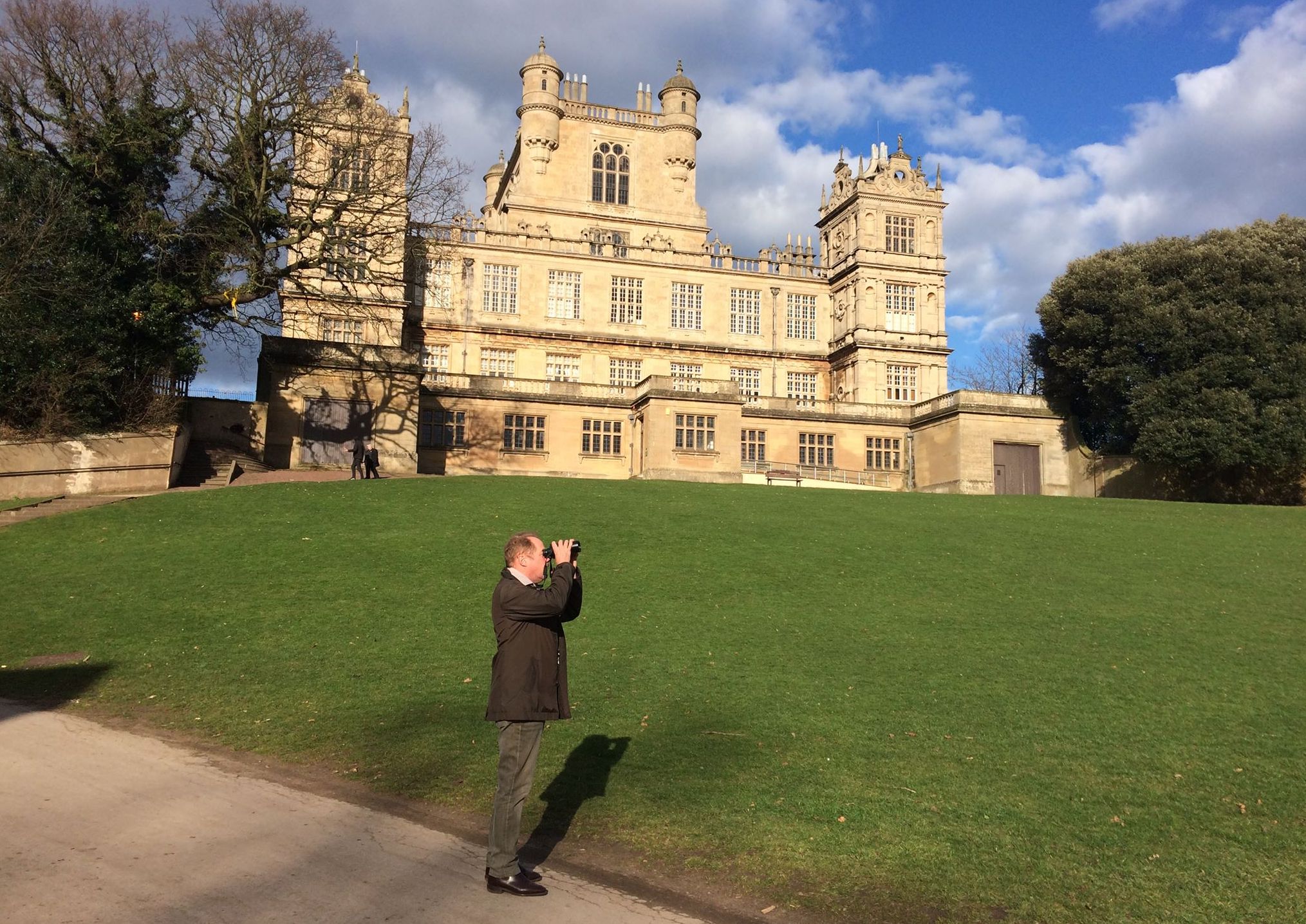
Birding the Batman Manor. Photo © Karen Possingham Karen: Wollaton Hall is famous as one of the more recent versions of Wayne Manor in the Batman movies. I had no idea it existed until we visited it this year, en route to a bird conference in Nottingham. It was built in the 16th century and is quite a lovely Elizabethan house, particularly in the sunshine when the stone appears honey-coloured and the windows sparkle. It has a lovely garden with deer and a pretty conservatory. It also has a nice spooky tower, which would suit Batman and is very romantic, English and atmospheric.
Hugh loved the gardens… I’m pretty sure he was just looking for nuthatches.
Hugh: From a birding perspective, there’s not much to recommend about the middle of England in winter. But even though it was pretty bleak, I’m always happy to see a Eurasian Nuthatch, a group of birds that you can’t find in Australia.
We visited Wollaton Hall at end of winter, so it was just resident birds waiting out the cold. (There are also a lot of introduced waterfowl, including Mandarin Ducks and Egyptian Geese.) I found better birding in London’s big parks, like Regents Park and Hyde Park, which oddly can have more species than the countryside.
-
Petra, Jordan
Indiana Jones and the Sinai Rosefinch

Hugh birds Petra, and ignores a camel. Photo © Karen Possingham Karen: Petra has been on my wish list ever since I watched Indiana Jones and the Last Crusade. And because I love ancient history. Another one for my World Heritage Site list, Petra is spectacular due to its hidden location and rock formations, which change colour depending on the light. We had an incredible time hiking up the windy stairs — with no safety barriers — to the Nabatean High Place of Sacrifice, where we had amazing views of the site including the Royal Tombs and the city below.
But the highlight of the trip was viewing the lovely pink treasury building in the picture. We got there so early that we had the place all to ourselves… the only time I will get up early is for a temple or a ruin! Hugh had a great time, but as always had his back to the man-made wonders looking for some special bird.
Hugh: Petra is where I saw my first ever Sinai Rosefinch. They’re pretty amazing… they’re not quite endemic, but they have a restricted range. They’re a nice big rosefinch, not unlike a Pine Grosbeak in the US, and they sit out in the open on the rocks.
After the rosefinch I went and chased a few drab warblers around the bushes. Petra is a good birding site because it’s in the middle of nowhere and the temples are widely dispersed, so you have to walk through a bit of rugged, stony vegetation. Which means the tourists are more spread out, too.
Like Machu Picchu the key for optimal enjoyment — of both birds and history — is to get there first thing in the morning. The bus tours often arrive early in the morning, but they’re not too bad because although they look annoying, they usually just hang around in a clump.
Oh, and Petra has nice wheatears, too, which are cute rock lovers.
-
Temple of Zeus, Jordan
Few birds, lots of goats and children
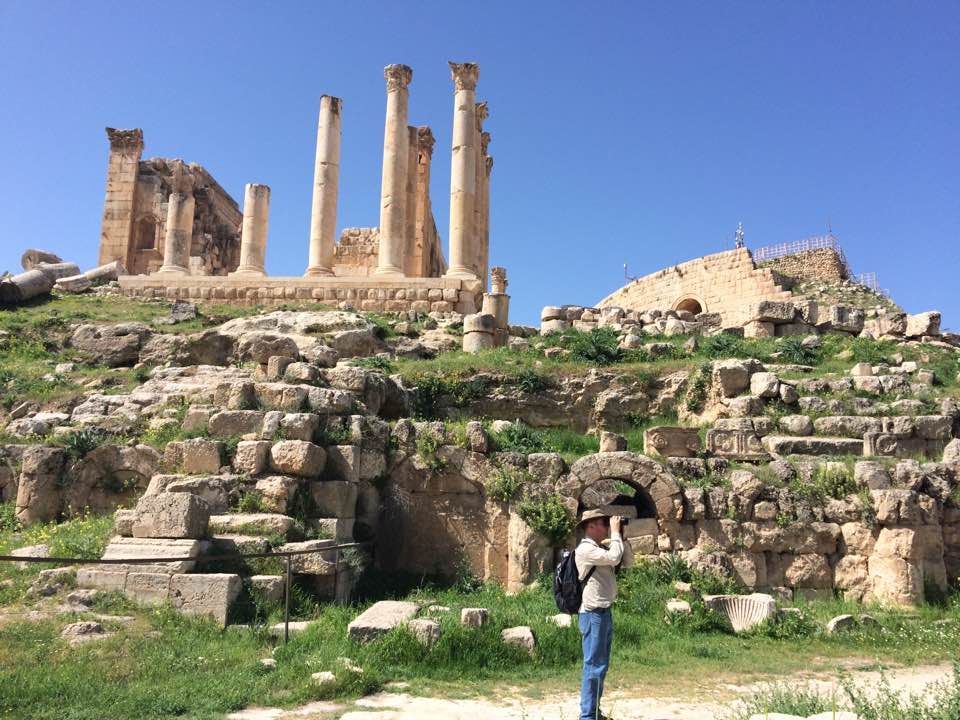
Birding yet another temple. Photo © Karen Possingham Karen: This temple is in the spectacular ancient Roman city of Jerash in the north of Jordan, which is a bit too close to Syria for my liking. It’s a large temple high in the mountains, which were full of wildflowers and goats. Unfortunately it’s not a World Heritage Site, but it should be! I was so excited by the gigantic arches and amazing paved Roman streets, but I think Hugh was a bit sick of temples at this point in our trip and he wasn’t all was that excited. But he always has his birding to keep him happy!
Hugh: Another temple that wasn’t good for birds at all. It’s a typical Middle Eastern site, fairly open, with a few goats and lots of small children. Not exactly optimal birding conditions. Still, I managed to see Bimaculated Lark, Blue Rock Thrush, and Black-eared Wheatear.
-
Taj Mahal, India
Ignore the palace (and the pollution)
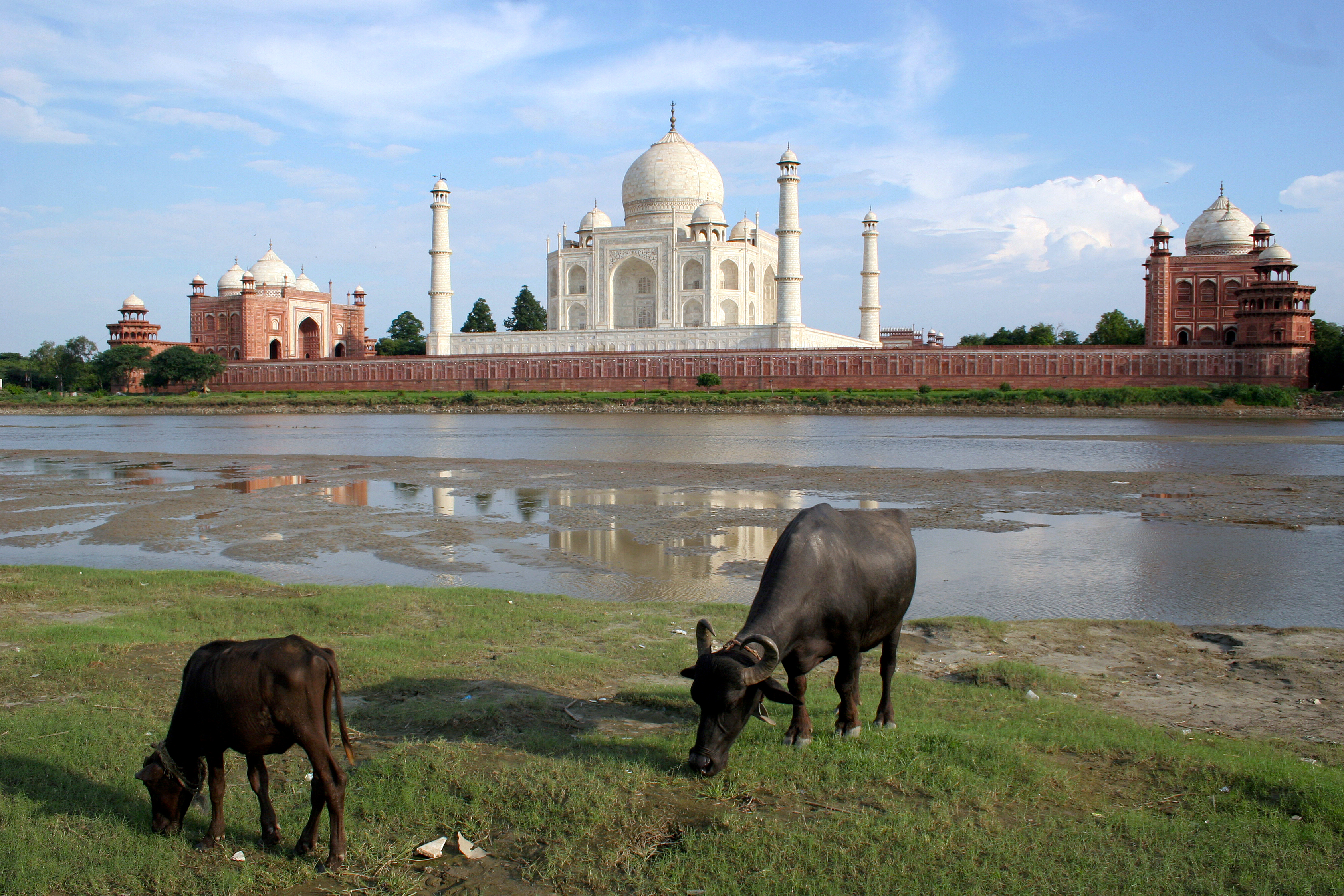
Photo © David Castor / Wikimedia Commons Karen: The Taj Mahal is one of the most beautiful World Heritage Sites that I have ever been to. It’s so delicate that it almost floats against the blue sky and the river, and the Mughal architecture is amazing. Meanwhile, Hugh was fascinated not by the breathtaking beauty of the palace, but by all of the birds scavenging in the polluted river. India sure is a place of contrasts.
Hugh: This place was interesting largely because there are very good birds, but to find them you have to go right to the back of the site and look over the river, which no one was paying attention to. It was the dry season, so there was a large, exposed sandbank absolutely covered in plastic bags, paper and other trash. But amid the trash there were spoonbills, waders, herons, and egrets all over the place. Clearly birds just don’t care about litter.
In India I’m always struck by how much wildlife is in the city, towns and agricultural areas because people just don’t persecute wildlife. The whole of the subcontinent has about 1,350 to 1,400 bird species, and I think they only have one extinction. Now compare that to North America, where you have a half-dozen extinctions over a much bigger area, with a smaller human population.
-
Monticello, United States
Missed migration. But still, woodpeckers.
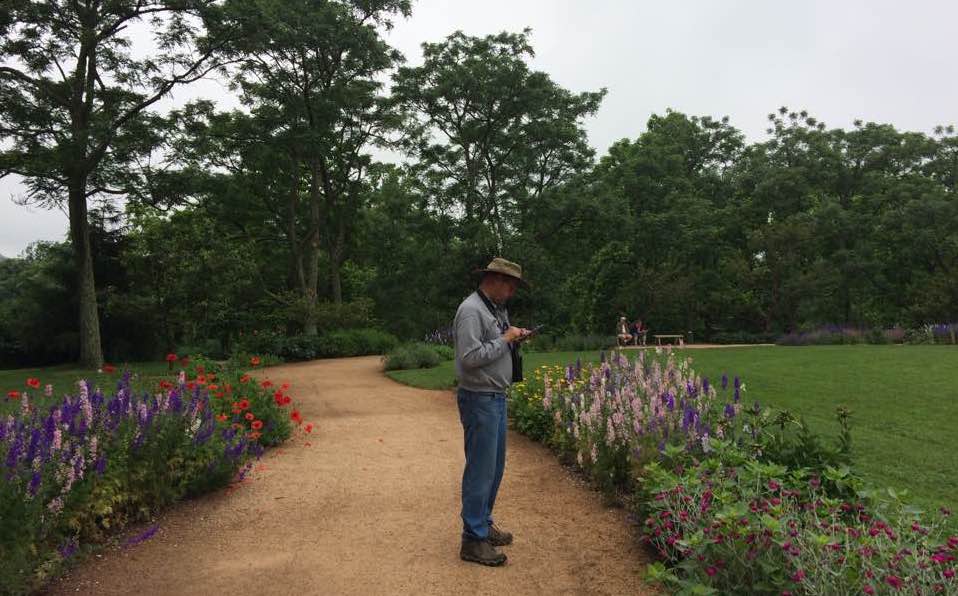
Predictable. Photo © Karen Possingham Karen: I have long wanted to see Monticello in Virginia as I am an admirer of Thomas Jefferson and, you guessed it, it’s a World Heritage Site. We visited in spring, and when the lovely gardens were in full bloom. Jefferson himself designed the pavilions, along with an ingenious way of getting wine to the dining room mechanically. He sure liked his wine, and Hugh approved! But then it was confronting to visit the slave quarters, and it made me like Jefferson just a little less.
Predictably, Hugh wandered off and walked in the woods in search of a warbler, a never-ending spring preoccupation.
Hugh: We visited on late May and by now the trees were in full leaf. I had hoped for some migrants, but I was too late and the impossibly dense canopy thwarted me at every turn. The trip reminded my how narrow that exciting migrating warbler window is — three or four weekends — and so timing is everything. I saw mainly park birds, but I am always excited to see a Pileated Woodpecker, because Australia doesn’t have any woodpecker species.
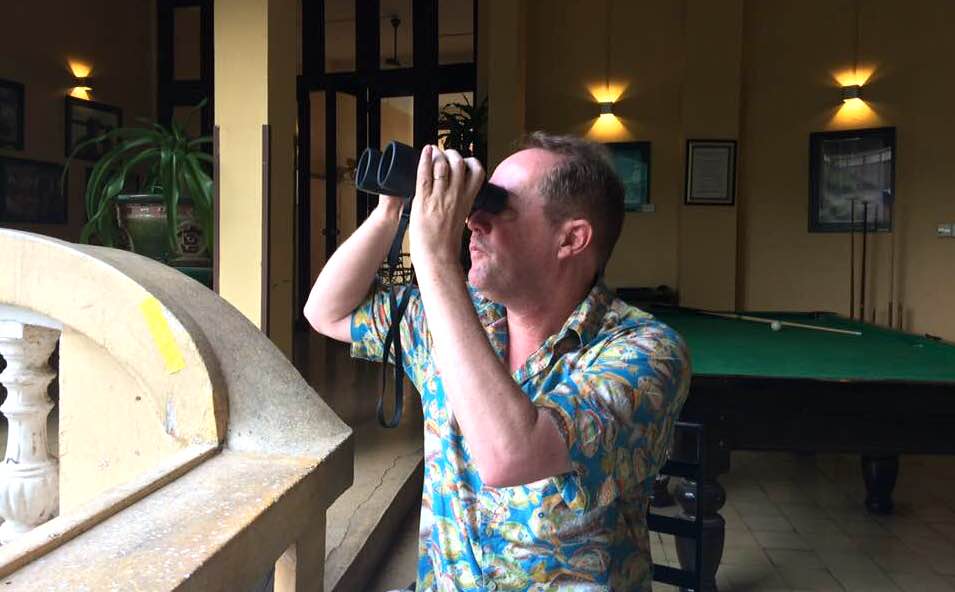



Join the Discussion